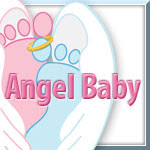Corporate Department Takes Special Care
to Welcome Back Bereaved Mom Co-Worker
*
By Monica Novak
*
I received a call one day from Pat, the Share support group facilitator and perinatal bereavement coordinator at the local hospital, telling me that she and I had been invited to speak to one of the departments at a nearby corporation. Diana, the manager who had contacted Pat, told her that one of her employees, a woman named Michelle, had recently delivered her firstborn child, a stillborn daughter, and was about to return to work after a six-week maternity leave. Not only was Michelle an employee, she was a dear friend of Diana’s and everyone else in the department. They were deeply concerned about Michelle and wanted to do everything possible to make her transition back to work as easy as possible for her. Diana and some of the others had spent time with Michelle during her leave, and the department was planning a welcome back luncheon several days before Michelle’s official return to work to give her time to ease back into the routine and help her to get through the awkward first moments in a pleasant setting.
.
Pat and I arrived and were welcomed by a group of about 12 people and a table of fresh fruit, muffins, and water. Diana had placed tissue boxes on each table anticipating an emotional discussion. Pat showed a short video of a family as they went through the process of discovering they were expecting a baby, sharing the joyous news with family, preparing for the arrival, and then the devastating news that the baby had died. The video ended with the delivery and last moments as the parents and extended family passed the baby around and said goodbye (it was a good thing we had the tissue on the tables, for them and for me!) Pat then talked about what grieving families typically go through following the loss of a baby, and offered suggestions for what to do or say.
.
I shared my own personal story of losing my daughter Miranda, stillborn at full term just like Michelle’s daughter, and my agonizing decision to return to work. I suggested that they make sure everyone in the department and possibly in the building be told of Michelle’s loss to keep her from the pain of being congratulated (the first two people who passed me in the hall at work the day I finally did return congratulated me and asked how the baby was). I told everyone not to have any expectations about Michelle’s productivity for quite some time, although they laughed at that, saying “You don’t know Michelle, she’ll be as sharp as ever!”
.
Some ways they could welcome Michelle back included: give Michelle a hug, tell her “I’m sorry,” sit down and ask her to talk about the baby, to always address the baby by name, and ask to see photos if she has them. I then pulled out a photo of Miranda and passed it around so they would know what to expect. I’m guessing that most of them, if not all, had never seen a photo of a dead baby. Many commented on how beautiful Miranda was, even with her red lips and red fingernails..
.
I talked about things people say that Michelle most likely would not find helpful. Don’t tell her stories of other babies who survived the same situation (like the woman at work who told me about her baby who survived an umbilical cord knot-the reason for Miranda’s death). Don’t say “Maybe it was for the best,” or “It was God’s will,” or “You’re young, you’ll have more children.” These were things that were said to me by well-meaning people, meant to lessen my pain which at that time was not possible.
.
I also suggested to these caring co-workers that they treat Michelle’s loss as they would the loss of a parent, spouse, or older child, the main difference being that her memories were limited to her pregnancy and delivery, and instead she had a lifetime of hopes, plans, and dreams. I told them to expect periods of distraction and possible moments of emotion, and to ask how she’s doing from time to time, and let her know they were thinking of her or her baby.
.
When we opened up for questions, someone asked if they should remove the photo on Michelle’s desk taken of her at the end of her pregnancy, concerned that the sight of it might upset Michelle upon her return. Pat and I agreed that that decision was best left up to Michelle, and although the sight of it might bring a moment of sadness as she remembered that happy day in her pregnancy, it would also serve as a reminder that she had indeed carried her child and was still a mother. She might choose to leave the photo on her desk, and could very likely feel resentment at having that decision made by someone else without asking her.
.
Another issue that came up was the new baby of another co-worker in the department who was also on maternity leave and expected to return soon. We suggested that it was okay to celebrate with the other new mother, but to be aware of the difficulty for Michelle and to acknowledge her feelings. Keep the lines of communication open, and encourage a dialogue between Michelle and the other mother. On a side note, I added that nobody should expect Michelle to show up for any baby showers or baptisms anytime soon.....
.
Someone wondered if they should present Michelle with something on her first day back, such as balloons or flowers. Pat and I felt that balloons seemed too celebratory, but flowers would be a nice gesture.
.
... holidays, especially Christmas and Mother’s/Father’s Day were very difficult days for bereaved parents. Michelle was still a mother, and it would be extremely thoughtful to send her a mother’s day card or at least acknowledge her on this day.
.
The anniversary of her baby’s death would also be very difficult, and I suggested that everyone put this date on their calendars and send a card, a note, or flowers next year to share in Michelle’s remembrance and show support. I wanted everyone to know that for the rest of her life, Michelle will be thinking about how old her baby would be, what she would be doing at that age, and how Michelle’s life as a mother would have been different.
.
Although Pat and I spoke from years of experience, our final message was this: Let your heart guide you. Don’t be afraid of Michelle’s pain or tears, and don’t be afraid to let her see you cry, because it shows you care. I closed with this poem that is often used in bereavement materials and was printed in our hospital’s Angel Garden calendar:
The mention of my child’s name may bring tears to my eyes,
but it never fails to bring music to my ears.
If you really are my friend,
let me hear the beautiful music of my child’s name.
It soothes my broken heart, and sings to my soul.
-Author Unknown
Special Thank You to Diane Kirk
for the link to this insightful article from





















1 comment:
This was such a wonderful story. I wish that all places did this. It should be a requirement. What a truly wonderful group. Makes me want to work there.
Post a Comment